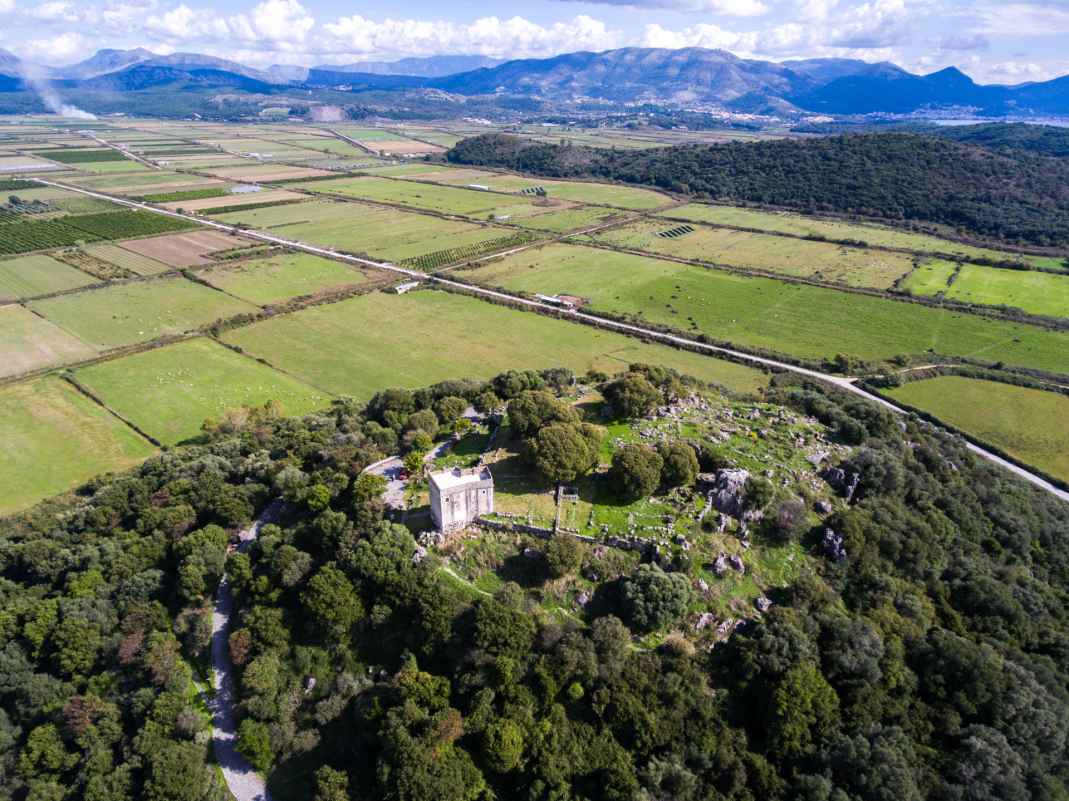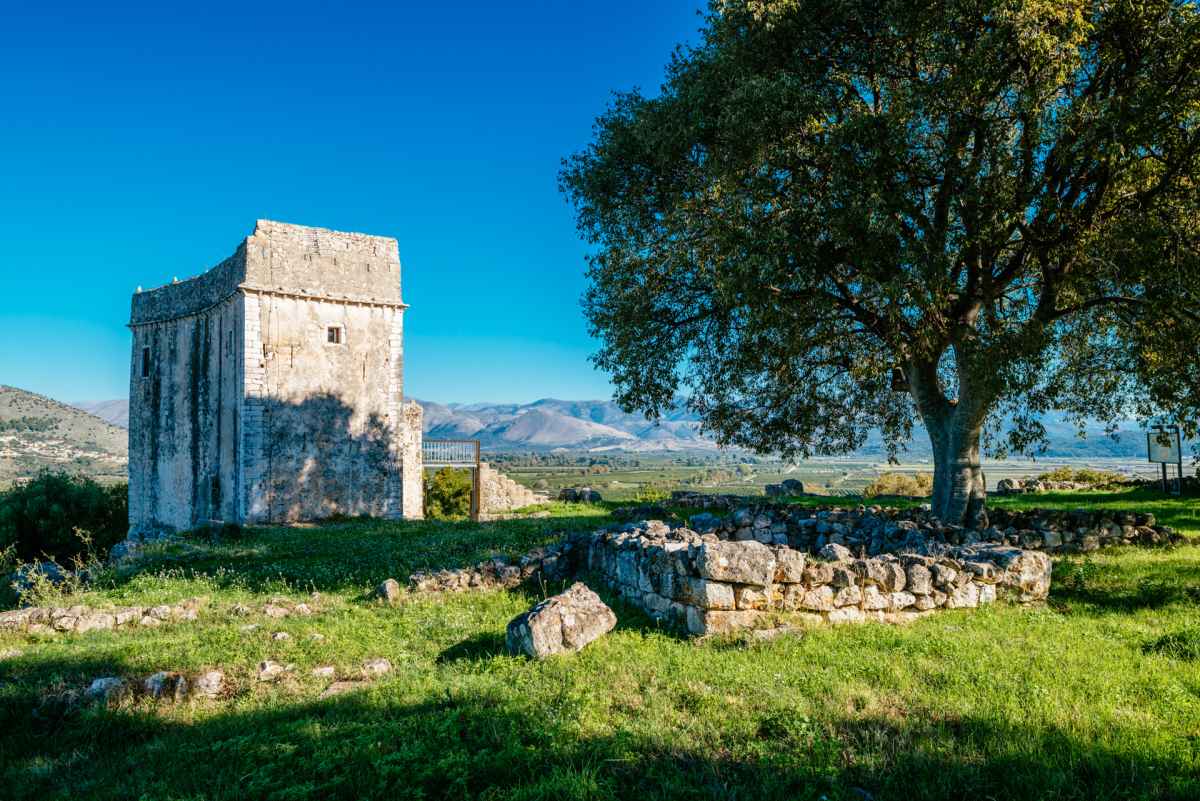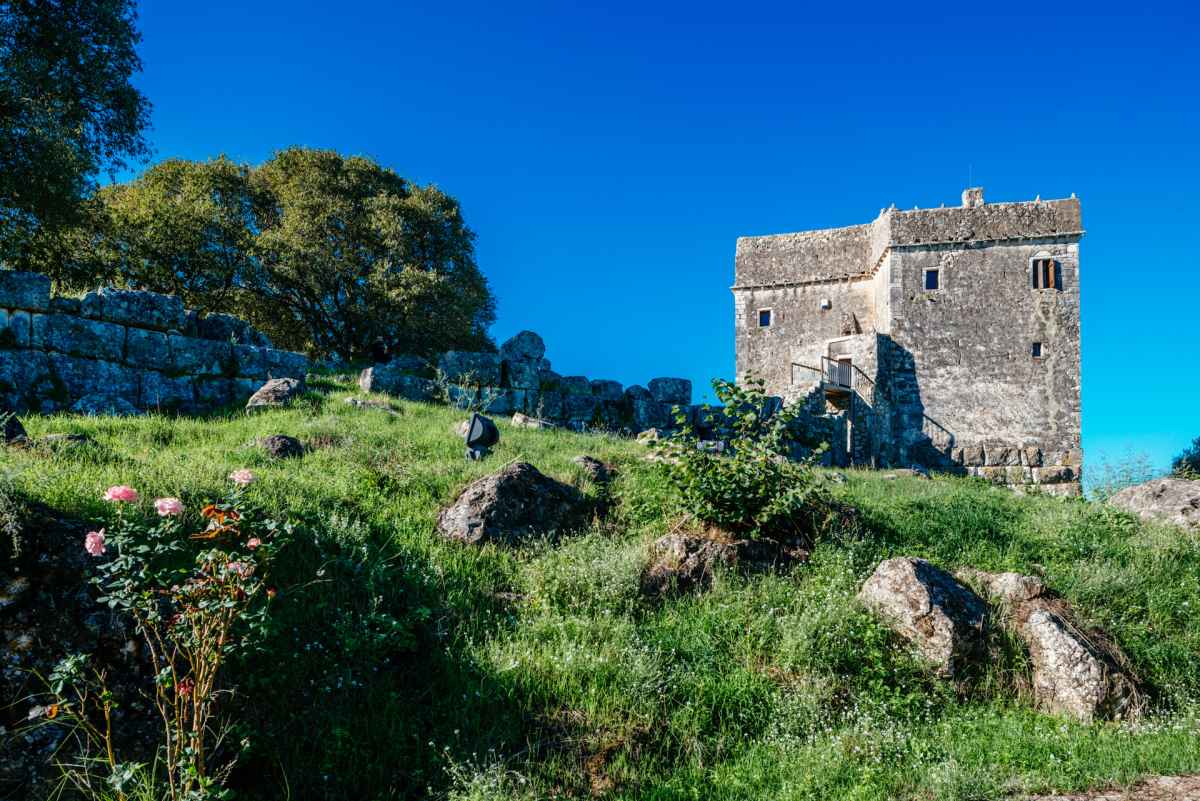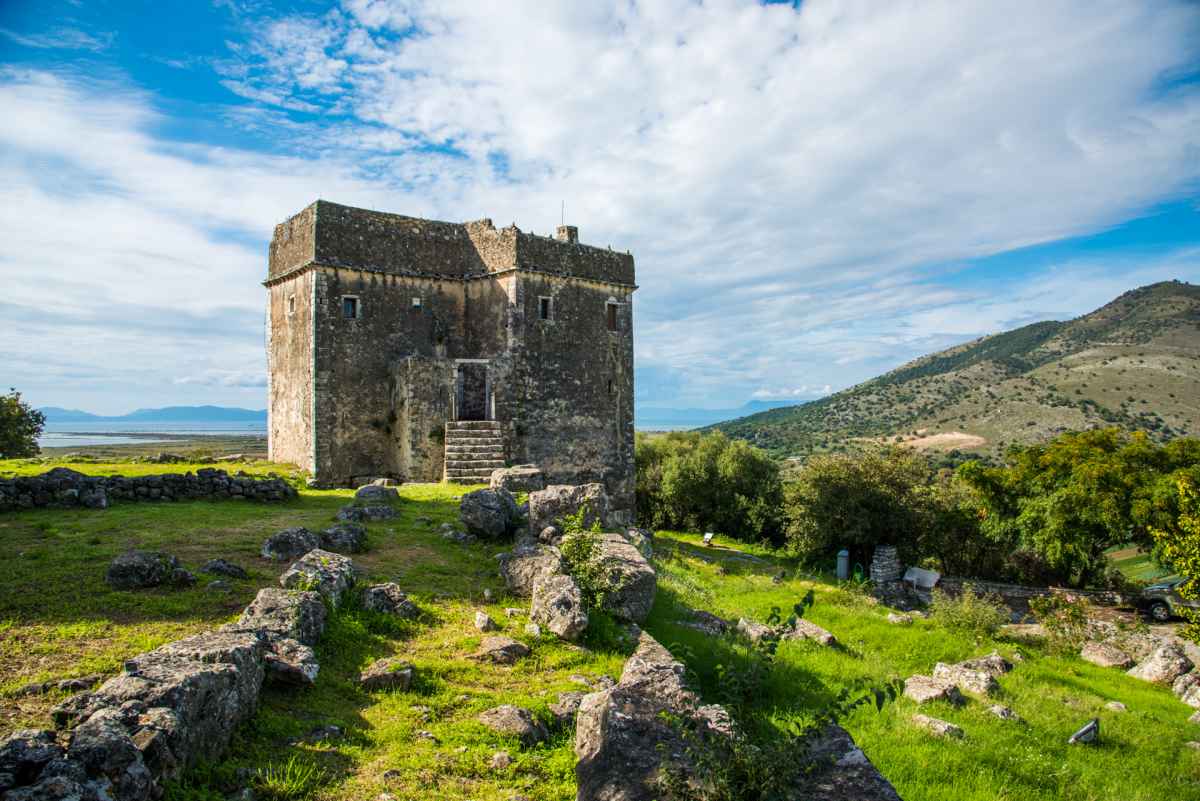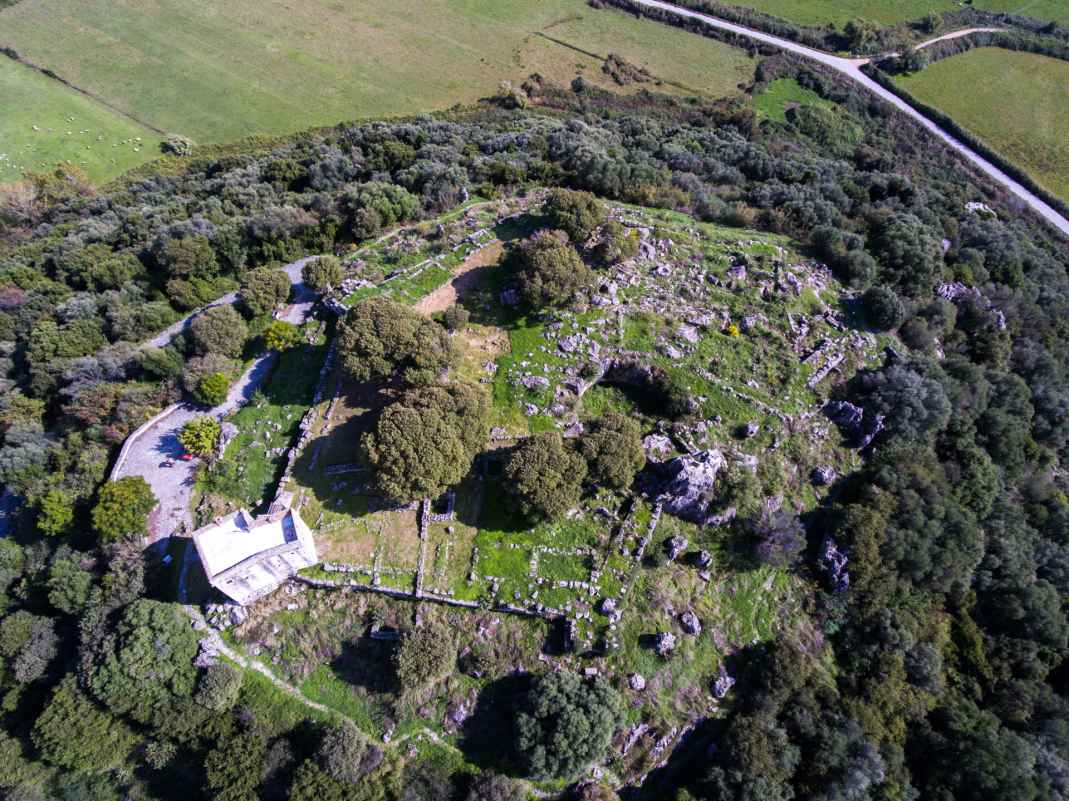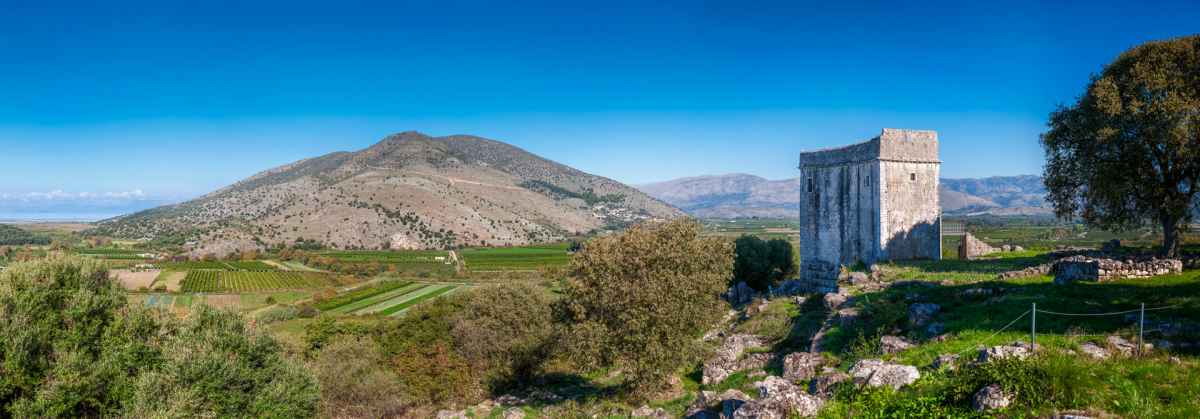Ragiou Tower is 10km northwest of Igoumenitsa, on an 85m-high hill. It was built in the 19th century and is essentially a part of the wider fortification of the region, located at a strategic spot that allows the supervision of the region as well as the defence at times of war. The post-Byzantine tower is located in an archaeological spot that was the oldest fortified place of the Ligia settlement and dates back to the 5th century B.C.
Local findings show that through the ages many fortifications took place at the spot, with the creation of a wall, which was later reconstructed, according to the needs and architectural standards of each era. The wall reaches up to 4m in height and was strengthened with towers at its edges, while on the inside it has a cistern 13m in diameter and 5m deep, carved on the rock.
The tower, or “kulia” according to Ottoman standards, was constructed in the mid 19th century and gave its name to the place. The tower functioned as an observatory, while being able to host a military group and be used for defence during a siege. There were no gates at ground level, but only higher, at a place that was accessible by drawbridge. Only higher storeys had windows. However, the building had numerous embrasures, as well as machicolation above the gate, from where the defenders poured hot oil or water to the besiegers. It is believed to have been built by Chadji Gravas, the Aga of Igoumenitsa, in 1850. It is Γ-shaped and one can clearly see the influence of Byzantine architecture. It belongs to the broader architectural style the Ottomans used to build such structures throughout the Balkans.
In 1999-2000 work was done to make it accessible and infrastructures were created for informative tours. The tower was restored to its initial form and turned into an exhibition space.
Video
Virtual Tour
3D Reconstruction

